Milk Ingredients:
Milk is very complete, valuable and special, because it provides the unique food of the baby in the first months of birth, it is very important. The main composition of milk consists of three different parts: Water, fats and non-fatty solids, including milk proteins (casein, albumin, globulin), lactose, lactic acid, citric acid and minerals. The table below shows the average composition of different milks.
| Ingredients | Cow | Goat | Human | Sheep | Female horse |
| Water | 7/87 | 0/86 | 2/88 | 3/81 | 8/89 |
| Fat | 61/3 | 6/4 | 3/3 | 9/6 | 2/1 |
| Lactose | 65/4 | 2/4 | 8/6 | 2/5 | 9/6 |
| Protein (38/6 N) | 29/3 | 4/4 | 5/1 | 6/5 | 8/1 |
| Ash | 75/0 | 8/0 | 2/0 | 0/1 | 3/0 |
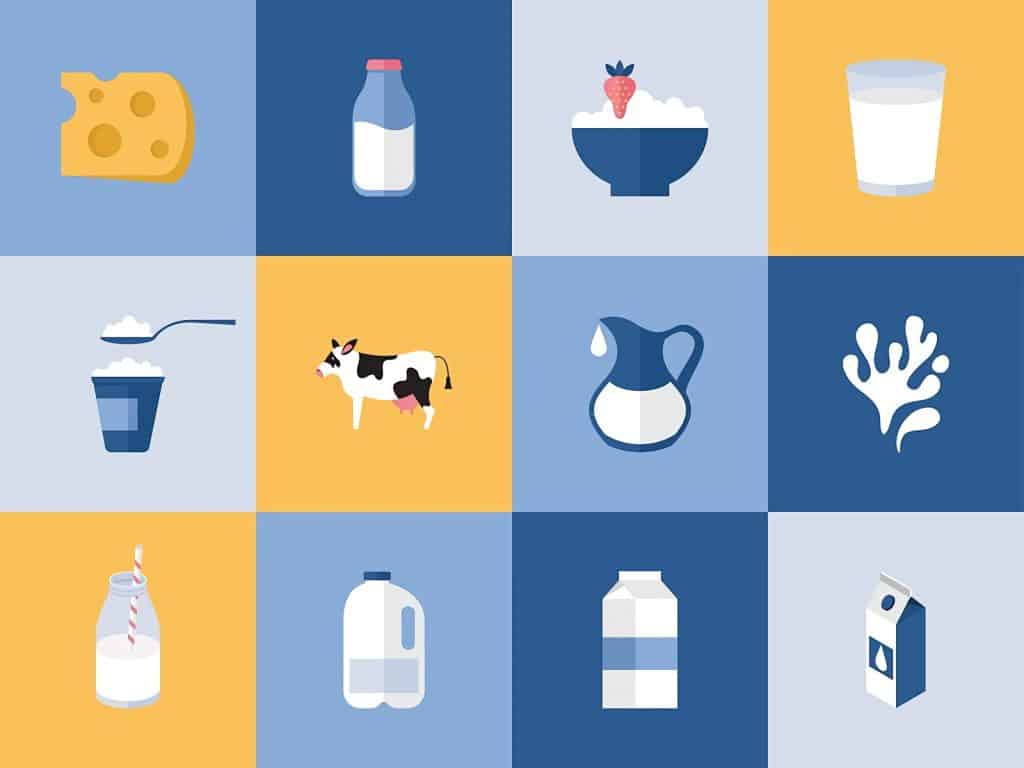
Factors affecting milk composition and spoilage:
The milk composition of different animals is not constant and several factors change the milk composition. These factors may be related to the disease or illness in the animal or may be related to breed, type of nutrition, season, lactation period, age and other factors. In the following, we will briefly examine these factors in cattle.
race:
The composition of milk of a type of livestock varies in different breeds and this change is more important in terms of fat content. The table below shows this change in some breeds. In addition, changes in milk composition are observed in different individuals of the same breed.
| Airshah | Farizin | Cransey | Shorts Horn | |
| Fat percentage | 69/3 | 46/3 | 49/4 | 53/3 |
| Percentage of lean dry matter | 82/8 | 61/8 | 08/9 | 74/8 |

Season:
The milk composition of different cattle varies in different seasons of the year. This change varies according to climate, type of feeding and lactation period. In general, in summer, when the animal feeds more on green fodder, the amount of milk increases, but the percentage of milk fat decreases, and vice versa, in winter, the amount of milk fat increases.
Age:
The amount of fat and lean dry matter decreases in the subsequent lactation periods and this reduction is 0.1% in the second, third and fourth lactations. Next time, the proportion of this decrease will be more.
Wit ratio:
In milk that contains the normal amount of nonfat dry matter (4.8 to 9%), the ratio of lactose: Protein: Ash, 13: 9 : 2, is. This ratio is commonly called whit and various factors such as adding or removing water do not change in this ratio and is a good tool for detecting abnormal and unusual valves.
Alkaline and acidic state and effect on milk spoilage:
Cow’s milk is acidic against phenolphthalein consumption and alkaline against methyl orange reagent, but indifferent to litmus paper due to the presence of phosphates. The pH of cow’s milk is usually around 4.6 and 6.6.
The acidity of fresh milk is about 0.14% (in terms of lactic acid). This amount is increased in storage due to the activity of the microorganism, and when the acidity reaches 0.3%, a sour taste is felt in the milk, and when the acidity reaches 0.6%, the milk coagulates at normal temperature. This condition is different in heated milk because the type and number of normal microbes in the milk changes due to the heat.
Normal and non-normal milk:
Ordinary or non-Morteza milk is milk obtained from the breast of a sick animal: Cows’ udders in the first place cause contamination and change the quality of milk. In addition to the various methods that are commonly used to diagnose breast ulcers based on microbiological tests, some factors related to changes in the composition of the patient’s milk can also be useful for this diagnosis.
The chloride content of healthy milk usually does not exceed 0.13%, while this amount is much higher in milk from livestock with mastitis. The amount of lactose and protein in the affected milk and the amount of dry matter in general also decreases.
The ratio of casein to protein, which is 80% in healthy milk, decreases, and the ratio of chlorides to lactose, which is about 3.2 in healthy milk, increases to 3 or more. Animal milk that is suspected of mastitis should be collected separately and milked from all four parts of the breast separately and sent to the laboratory for various microbial and chemical tests.
Milk standards:
According to international standards, raw milk must have the following specifications: Raw milk fat content should not be less than 3%, dry matter without (SNF) should not be less than 5.8%.
Not heated:
In some countries, health-certified farms are allowed to sell milk without the use of heat. Such milk should have a satisfactory result against the methylene blue test.
Pasteurized:
Pasteurization refers to the practice of keeping milk at a temperature of at least 63 ° C (150-145 ° F) for half an hour or at a temperature of 71 to 72 ° C for 15 seconds (6.161-81.159 ° F) for 15 seconds and then cool immediately. Such milk should have a satisfactory result against methylene blue and phosphatase test.
Sterilized:
Sterilized milk is milk that, after being smoothed and uniform at a temperature of at least 105 ° C (212 ° F), is stored for a period of time until the turbidity test results are satisfactory.
UHT sterilization:
Such milk should be stored at a temperature above 122 ° C (270 ° F) for at least one second and then sterilized. In general, two methods are common for this purpose.
One is the direct method in which hot steam is introduced into the valve and then the excess water is removed from the valve and the other is the indirect method in which the necessary action is reached by the heat exchange operation.
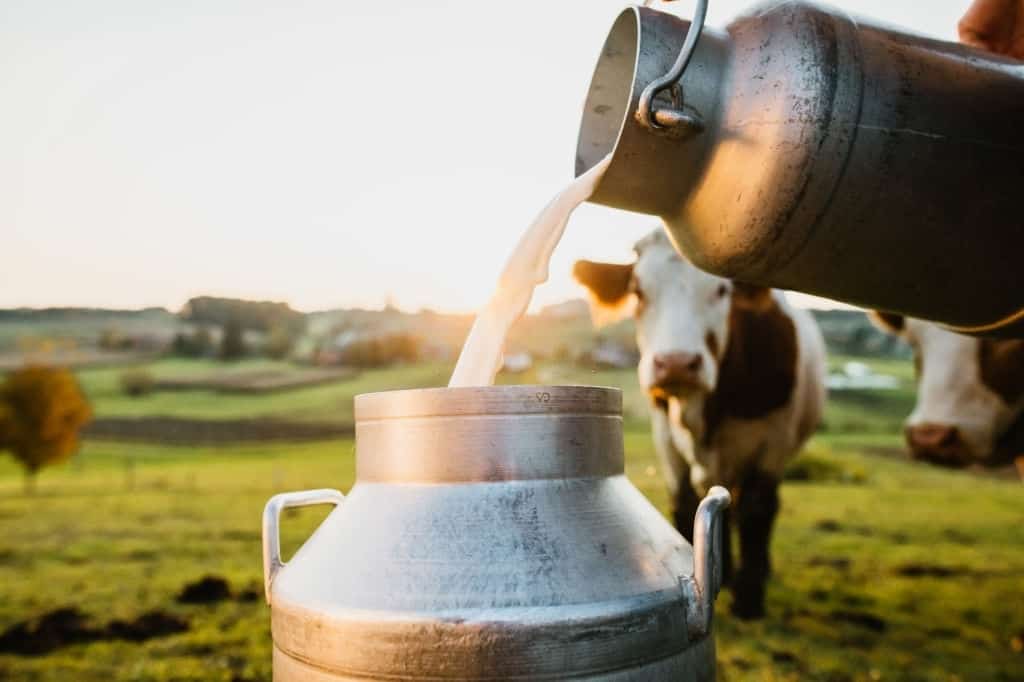
Pasteurized milk and factors affecting milk spoilage:
Determining the amount of milk fat:
We measure milk fat using a butyrometer 40. First, using a 10 pipette, remove 10 cc of sulfuric acid (9 + 1) and pour into a butyrometer. Then, using a bubble pipette 11, take 11 cc of milk and slowly add it to the acid along the wall of the butyrometer.
We must be careful that the surface between the acid and the milk does not turn black, because turning black means burning the fat in the milk. Finally, using pipette 1, remove 1 cc of ethyl alcohol and add it to the contents of the butyrometer. Dry the mouth of the butyrometer with cotton and close it. Then cool the butyrometer several times slowly so that the contents are well mixed.
After a brown liquid appears on one hand, centrifuge the butyrometer for 5 minutes at 60 ° C at 1200 rpm. Due to the fact that it is calibrated on a butyrometer, the amount of fat separated from the milk can be determined using calibrations.
Determination of milk acidity:
To determine the acidity of milk, the titration of this substance with a normal gain of 0.1 is used. Pour 10 cc of milk and 10 cc of cold boiled distilled water into a small Erlenmeyer flask (eg 100) using a pipette 10.
Pour a few drops of phenolphthalein to identify the end point of the operation and titrate it with a normal gain of 0.1. It should be noted that to prepare boiled distilled water, we boil some distilled water. As soon as it boils, turn it off and immediately cover the dish (with cotton or foil).
After cooling completely, remove the lid of the container and close it so that the CO2 gas in the air does not dissolve in it. If we boil water or do not close it after boiling, the CO2 dissolved in it will not increase the acidity and as a result, more profit will be needed to neutralize it.
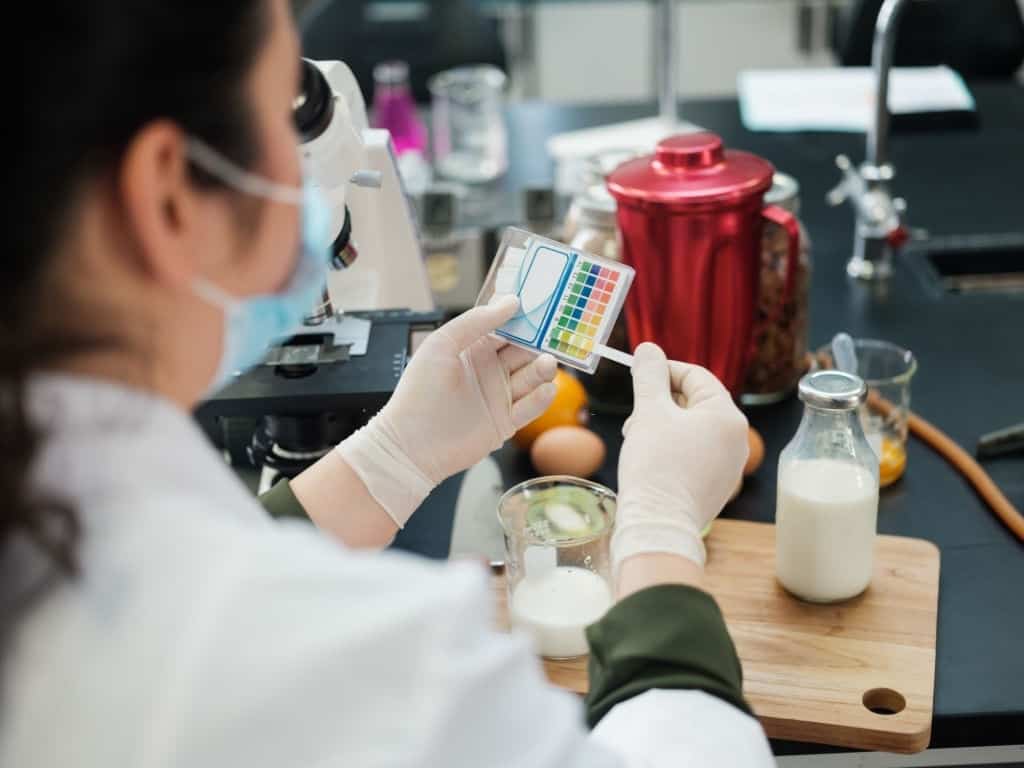
Dry matter percentage:
Place the plate in an autoclave at 110-100 ° C for at least half an hour. Then put it in a desiccator to cool and reach a constant weight. We weigh it and write down its weight. Pour 5-10 grams of the sample into it (note the exact weight of the sample), place the plate in the oven at a temperature of about 100 ° C for 1-2 hours. Then take the plate out of the oven and put it in the desiccator to cool. After cooling, we weigh it again.

Determination of milk density:
We use lacto to determine the density of milk. Pour 200 cc of milk into a 250 cc meso. Slowly enter the lacto density into the meso (milk should be such that the milk overflows when the lacto density enters). Density is designed based on 15 ° C.
After fixing the lacto density, we first write down the temperature, then read the density number. It is better that the sample temperature is 15 degrees Celsius to reduce the work error. For each unit more than 15 to 20 ° C is added to the read number by 0.2 and for each degree less than 15 to 20 ° C is subtracted by 0.2 by the read number.
For each unit more than 20 ° C, add 0.3 to the reading number. Also, for one unit less than 20 ° C, we subtract 0.3 from the read number. For example, at a temperature of 23 degrees Celsius, the reading number is 5.26. so:
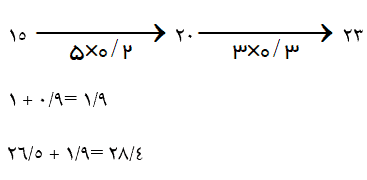
Using the reference table, we read the milk density at 4.28 ° C. The written number is 1/0284.
Search for milk fraud:
It is very common for profiteers to commit fraud in milk in various ways. Adding water to milk or actually diluting it or taking some of the milk fat is a common practice that is done in this way.
In many cases, this type of fraud is easy to detect and in some cases confuses the experimenter. It is possible to add water to the milk or dilute it by measuring the specific gravity of the milk.
This means that because the specific gravity of water is less than milk, adding a certain volume of water to milk reduces the specific gravity of milk. On the other hand, whenever part of the milk fat is taken, the specific gravity of the milk increases, and whenever the fat-taking operation and the addition of water to the milk are done together, there may not be a significant difference in the specific gravity of the milk.
However, the results of other tests, such as the determination of dry matter and non-fat dry matter, as well as the amount of fat in milk, provide the necessary information about the purity or cheating of the milk.
Wit ratio, which is the ratio of lactose: Protein: The ash is usually 2: 9: 13 and it is much less common for this ratio to change in a mixture of milk from a ranch or milk sent to the factory. Of course, the milk of a head of cattle may show significant changes in the amount of compounds for various reasons, but these changes do not usually occur in the milk mixture of healthy cattle.
The amount of ash is about 8% of lean dry matter.
The amount of albumin in healthy milk is about 0.6%. High levels are either due to colostrum (early lactation) or to disease. Freezing is usually used to measure the amount of water added to milk, but when an isotonic fluid with milk is used instead of water, determining the freezing point does not help much in detecting this fraud.
However, if different salts are used to make isotonic fluid with milk, the high ash content will help in the diagnosis, and if no ammonia salt is used, the high total nitrogen will also help in the diagnosis.

Vira smart packaging for milk:
Team Vira By examining and testing the compounds and factors affecting milk spoilage, by obtaining detailed information on the health status of milk, the best time of consumption, and its storage conditions using Smart label which produces according to this data, helps dairy factories and people to monitor the health status of milk in a real-time, very accurate, and practical way, from the time of milk production and packaging by the factory to its consumption by people. Simulation of the internal environment of packaging to monitor
This makes it easy to tell what the current state of milk is in terms of health, just a simple change of color of the smart liquid n the middle of the label in the three fresh, healthy and rotten states, to avoid wastage and poisoning. Due to lack of awareness of milk health status that current expiration dates are not able to monitor and check.
These smart tags are made entirely of natural materials and are environmentally friendly, have no environmental pollution and are completely biodegradable.
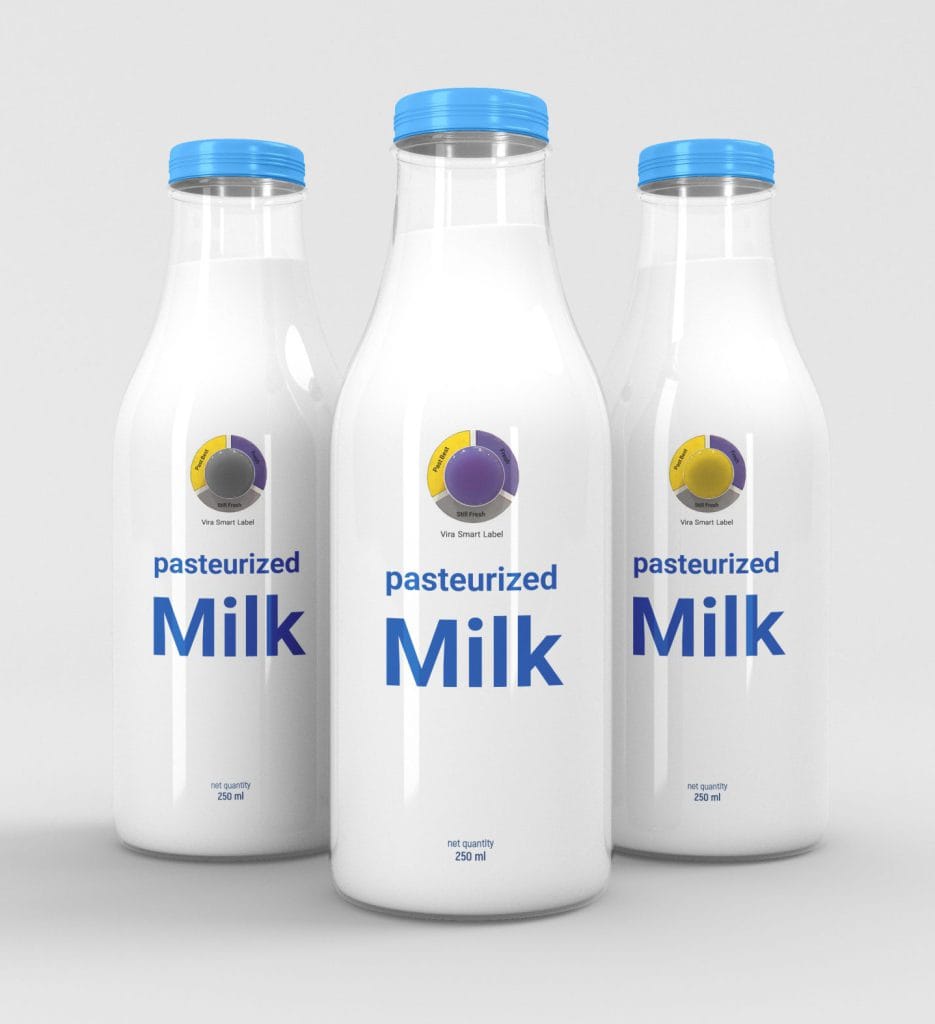


Good day! This post couldn’t be written any better!
Reading this post reminds me of my old roommate! He always
kept chatting about this. I will forward this article to him.
Fairly certain he will have a good read. Thank you for sharing!
Thank you very much for your kindness and the energy you gave us.
Wish you luck.
Is it possible to copy and paste news articles for my blog or is that copyright infringement?
Unfortunately, I have to say that our site articles have copyright rules and it is not possible to copy and paste content.
You can republish it only if the source is mentioned and the copyright is protected.
It is really a nice and helpful piece of information. I am glad that you shared this helpful info with us. Please keep us up to date like this. Thanks for sharing.
Thank you very much for sharing your opinion with us. Yes, we definitely try to use the most up-to-date and practical content for the site’s articles.